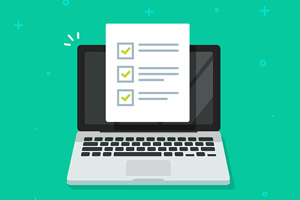
by Peggy Bell Hendrickson, Director, Transcript Research
I can remember the days when we would have to send a fax request at specific times of day to someone in the UK who could verify West African Examinations Council (WAEC) examination results certificates. When scratch cards came into existence about
15 years ago, we were ecstatic! For just a few dollars, the student could buy a scratch card and send the info to us, and we could immediately verify their results online. Amazing!
But fifteen years in, the age of technology has brought so many astonishing advances we could never have imagined back when email was still relatively new. Fast forward, and we’re now working with national and global digital repositories, blockchain,
and all sorts of ad hoc proprietary systems and programs.
One of the few silver linings of the pandemic that has upended the educational sector is the increase in availability of technical solutions to long-standing problems. While we might disagree on the viability of long-term remote learning, hopefully we
can agree that the increase in digital solutions for sending and receiving digital student data is timely and useful.
The value and variety of verifiable electronic records
In my office, we have long felt that electronic communication directly with the source of the educational records was even more valid than the old standby of “original documents in a sealed envelope mailed directly from the issuing institution”
(which we do still require for several countries). We love getting the documents sent directly to us via verifiable electronic means, downloading them from a digital repository, or using a national or institutional results database to validate
documents, because those things are a step removed from the student, increasing their likelihood of being authentic.
Digital student data systems are offered by a variety of types of institutions. We see them in secondary, technical, and postsecondary examination. We access international platforms that are used by hundreds of institutions across the globe, including
Parchment and Digitary. Countries with massive educational systems, such as India and China, have more than one digital records service used for students and graduates to send their documents securely via an approved online service. Other countries
have national databases to verify awarded degrees as requested by third parties with signed student release forms. And some countries have national databases where students log in and request their diplomas to be sent electronically directly to us.
Increasingly, we are seeing new tools such as blockchain certificates.
Be prepared
Transcript Research always strives to keep current on new digital systems, but this is an area where things are changing rapidly. To keep pace, we reach out to our international colleagues to confirm things we hear from students, or stumble across on
our own. We read industry news, attend professional development opportunities, and try to stay informed. We look at presentations and presenters for conferences we can’t attend so that we know who to ask when we hear about the latest product
or website. We don’t accept emails, QR codes, or websites without doing our own research.
When the pandemic threw everything into chaos, and many institutions were closed to in-person engagement for months or operating remotely, causing delays on all fronts, we were so grateful that we had already been using digital student records systems.
Join us on September 22 at 2 pm EDT for “Digital Documents and International Admissions: What You Need to Know” so
you can be more prepared to make things easier on your students and yourselves.